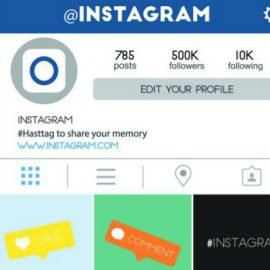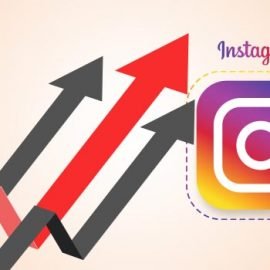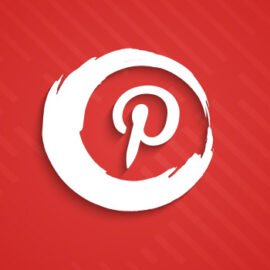
|
Getting your Trinity Audio player ready...
|
Due to digital evolution, the way and frequency with which people use social media has changed. Therefore, it is vital monitor social media. It is not possible to carry out digital marketing actions and inbound marketing without good monitoring. This helps at several points in the strategy. And the content. After all, you will analyze the entire repercussion of the message with your audience.
In this post we will show you why to monitor social media and how to do it efficiently.
Why should we Monitor Social Media?
Few companies invest in monitoring. In this way, companies that resolve monitor social media have a huge difference. And a great competitive advantage. But not everyone understands the importance of this. So, let's analyze some points.
Social media has been replacing traditional channels. Thus, they have become the main means of communication between brands and consumers. Therefore, it is essential to monitor and analyze your persona. And find out what is being said about your products and services. This can be done both on your public profiles and on the company's fan page.
Therefore, monitoring social networks helps to build proximity with the audience. Therefore, the professional must know how to detect and collect information that travels across the network. It is a job that generates a lot of demand. But it makes all the difference in strategy.
One of the most common tasks in this area is user support. So, there can be good savings with 0800 expenses. But be careful. It's not just about responding to the customer. You need to take the initiative to build a close relationship with the audience. Therefore, it is necessary to be available to resolve any demand that arises on social media.
Another important point is that brands use social media monitoring as a way of benchmarking. After all, you can see what your competitors are doing. And thus, have a better understanding of market behavior. This helps to devise better content strategies. However, be calm when analyzing this data. Your competitor's goal may not be yours. So, be careful when comparing metrics.
Where to monitor?
It is important to understand that social networks only allow monitoring of public profiles. Therefore, it is not possible to monitor private profiles. But nowadays, the vast majority use social networks with open profiles. Check out other monitoring specifications on each network:
- Instagram: It is possible to monitor users, profiles and hashtags;
- Facebook: you can monitor public profiles, fan pages and public groups;
- YouTube: monitor posts and comments using a combination of terms, exactly the same as Google. Logical operators are used AND, NOT e OR;
- Twitter: profiles, terms and hashtags.
Analyze which networks are important for your business. You can even analyze a network where your company is not present. This way, you can see that your customers are there too. And start joining this social media too.
What to monitor?
There are several items to monitor on social media. The collection of information must be very thorough. Check out some items:
- Brand Perception: It is the most applied function in social media monitoring. The focus is to collect what is being said about your brand. To do this, what people publish and mention directly and indirectly about your business is analyzed;
- Content production: Monitoring terms related to your company and business allows you to find the main viral topics. By discovering the main stories that are generating common interest among your audience, it becomes easier to create targeted content. And thus, increase engagement.
- Influencer Discovery: Monitoring helps you identify who the most influential people are in your market within social networks. And as we know, consumers are more impacted when they watch someone talking about a brand than by the brands themselves. It's a great way to boost the business;
- Competitive intelligence: Here the focus is on monitoring and analyzing your competitors’ strategies and posts. This way, you will identify the main forms of interaction in your market. And, after collecting this data and information, you can compare it with your business indicators. And so, you can make better decisions.
But look carefully. You don't always need to monitor all of this. Analyze which items make sense for your company.
How should social media monitoring be done?
The voice of the audience is at the heart of social media monitoring. So, the mission is to find opportunities. Likewise, it is necessary to intervene in times of crisis. These are actions that generate rapprochement and improve engagement. And as already mentioned, it is necessary to map and monitor citations and mentions about your market, your brand, product or service. For example:
- Brand name, even with recurring spelling errors;
- Names of company products and services. Also carry out searches with possible spelling errors;
- Mentions of the company's competitor to evaluate opinions and relationships;
- Mentions with tags in Facebook, Instagram and Twitter;
- Related hashtags or brand-owned hashtags;
- Keywords that are of interest to the brand, related to products and services.
Remember: monitoring must be uninterrupted. After all, interactions and citations on social media don't stop. This is the path to success for monitoring social media. This way, the brand will be able to preserve its name. And you'll be ready to act when you need to. Furthermore, you will also be able to demonstrate a good image with the audience.
What metrics should I use in social media monitoring?
First, it is necessary to define the important metrics for monitoring. And leave vanity metrics aside. Is the number of followers on Instagram, for example, more important than engagement? Does this metric indicate the real objective of your actions? It's important to set the right metrics. A mistake at this stage could compromise the entire strategy.
In some cases, for example, the number of mentions is more than enough to evaluate the campaign's performance. But each metric depends on the objective and the chosen strategy. Check out some of the most viewed metrics:
- Reach: number of people you reached with a given publication;
- Engagement: shows how much your audience is relating to your brand/product;
- Conversion rate: happens when a user takes a defined action based on your content. For example: purchasing a product or generating a registration;
- Traffic: analyzes how many people access your website or blog through links on social media.
Conclusion
And, finally, let's summarize 5 benefits of monitoring social media:
- Understanding the public’s behavior through observation of what they like or don’t like;
- Understanding the perception of the brand among the public that uses social networks;
- Identification of market trends through subject mapping;
- Insights for new campaigns, actions and content;
- Crisis management.
Many companies do a great job with their content. But they don't monitor social media. But you already know why and how to monitor social media. So how about speak to a Vero Contents expert? Talk to Vero!



